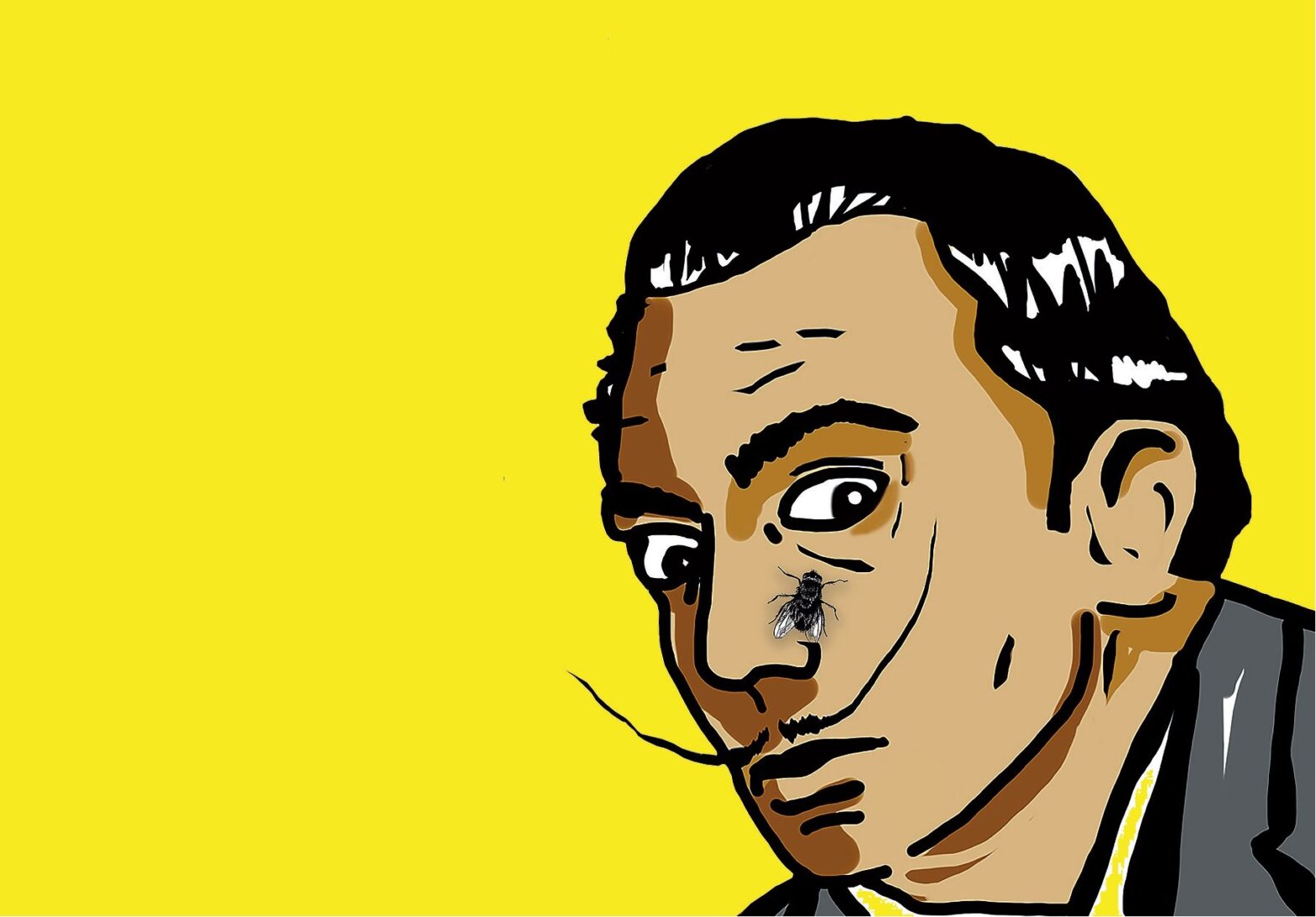He was born in the Catalan town of Figueres in the north-east of Spain where he spent most of his life. It was there that he created groundbreaking works that have inspired artists and audiences for generations. Dalí loved publicity and was eager to share his artistic vision with a wider audience, so he exhibited his remarkable surrealist paintings in Paris, London, and New York. At the same time, he sought creative inspiration and collaboration with world-renowned artists and intellectuals of his time, including Coco Chanel, Sigmund Freud, and Pablo Picasso.
In addition to painting and drawing, Dalí was also involved in printmaking and sculpture, illustrated books, was interested in fashion, designed theatrical costumes and sets, and even dabbled in the film industry.
Advertising was one of the areas in which he excelled. Not only did he create several advertisements himself, but his style was also often copied in advertising. He worked with a number of brands, including Bryan’s, Johnson Paint, and various perfume and jewellery companies. He even created several beautiful advertisements for the French railway company SNCF.
A grand life demanded a grand income
Not every artist has to live in poverty. “From the 1960s everyone knew that Dalí needed close to half a million dollars a month to fund his lavish lifestyle,” explained journalist and Dalí specialist Stan Lauryssens to Independent in 2009. “He was living like a mini-maharajah.” That lifestyle needed funding, and advertising was a solution for Dalí. As he came as a revelation, he was a busy man, from selling chocolate bars or stockings to antacids...
Bryan’s hosiery
Dalí was innovative in everything he did. In his ads for Bryan’s, he departs from the traditional depiction of stockings. Instead, he shows the legs arranged in different directions, stacking them on top of each other, multiplying them, and even arranging them in arcs.
Video: Salvador Dalí ads for Bryan’s hosiery
Dalí and the world of perfume
Salvador Dalí’s relationship with the perfume empire goes back a long way. His first attempts were made in the 1940s by Italian fashion designer and friend Elsa Schiaparelli. Later, Dalí collaborated with various designers, such as Pierre Dinand, and a number of perfume brands. The bottle for the Aphrodite collection is definitely worth mentioning, which was created out of the artist’s desire to immortalise Gala, the love of his life. This is how the famous Dalí Eau de Toilette was created. It is an intense feminine perfume with a distinctive essence of jasmine and rose, which was Gala’s favourite flower. The flacon designed by Salvador Dalí in the Aphrodite collection is inspired by the mouth and nose of the goddess Aphrodite, which Dalí painted in his work Aphrodite of Knidos.
Video: Aphrodite perfume
Chupa-Chups logo
Another of the things Dalí became famous for was the logo for Chupa-Chups. In 1969, during a lunch with the owner of the confectionery factory Enrico Bernat, Salvador Dalí drew several versions of the new logo. At the time, Bernat had already hired a team of designers to create a new logo for Chupa-Chups, but after the meeting with Dalí, he immediately fired them all.
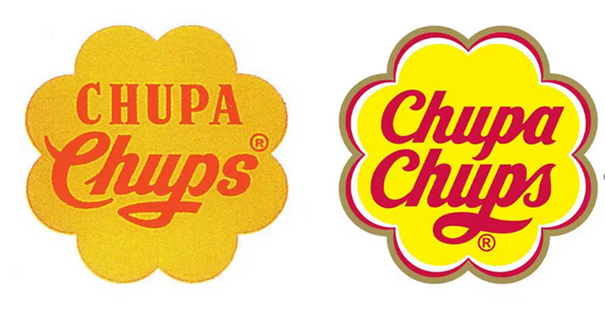 Dalí’s logo on the left (1969), the current logo on the right
Dalí’s logo on the left (1969), the current logo on the rightThe Persistence of Memory: the work that inspired many brands
One of Salvador Dalí’s most famous works is clearly The Persistence of Memory, which beautifully shows how the Surrealists worked with dream imagery and ideas.
Video Salvador Dalí – The Persistence of Memory
Three major brands – Lipton, Lexus and Volkswagen – have used this work as inspiration for their advertising.
The Lipton Yellow Label advert does not use the whole work, just part of it. An important element is the substitution of the clock for the tea bag cover. It is a simple substitution without any deeper thought. The author of the work, J. Walter Thompson, has only used Dalí’s artistic style and work.
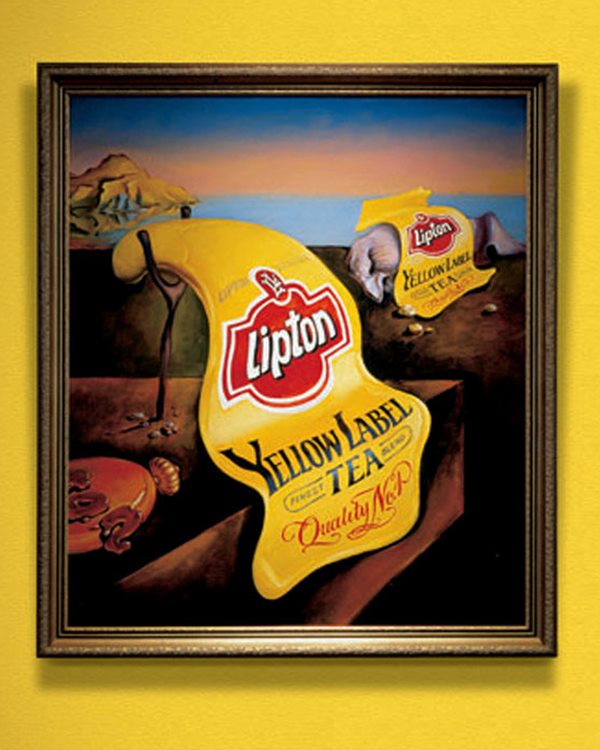 Source: pmg.com
Source: pmg.comThe Lexus brand used the original image in its entirety and changed only some parts. When viewed from a distance, the differences are hardly noticeable. In close-up, however, the swap is clear. Instead of a clock, there are car wheel rims and a hint of Lexus in the background. Everything is in its original colours and dimensions.
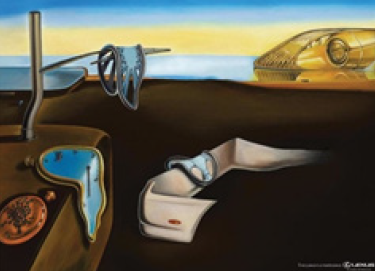 Source: lexusenthusiast.com
Source: lexusenthusiast.comAdvertising for Volkswagen was carried out in 2008 by the advertising agency DDB Berlin. The graphic design was done by Russian illustrator Kirill Chudinskiy who was inspired on the one hand by Dalí’s Persistence of Memory and on the other by Magritte’s Man in a Bowler Hat. Dalí’s melting timepiece from the Persistence of Memory becomes a melting fuel gauge for Volkswagen and bad news for the oil industry.
The aim of the ad was to highlight the absurdly low consumption, eco-friendliness and economy of the BlueMotion Polo. To do this, the ad uses a variety of surreal imagery, such as a pump attendant unhappy with his small business, his many empty pockets pointing to the loss of customers at the pump due to lower consumption, or an ant carrying a miniature petrol can. But apart from emphasising low consumption, the artworks that inspired the advert naturally lend an aura of artistry and prestige to the Volkswagen brand and their Polo BlueMotion car.
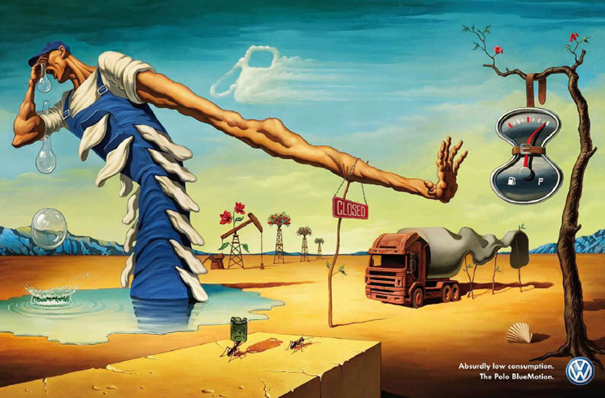 Source: postkiwi.com
Source: postkiwi.comTV ad for Datsun
In the 1970s, the Japanese automaker Datsun Motor Company (now Nissan cars) commissioned four contemporary artists to promote its models in the U.S. market. One of the artists chosen was Salvador Dalí who used ink drawing, watercolour, and collage. His work was reproduced in the press of the time. As part of the reward, Dalí received a Datsun 180B Wagon, which was extremely rare in Spain in those years and which is now on display in the courtyard of Púbol Castle.
A TV advert was also made. It was inspired by The Persistence of Memory in which the Datsun appears inside a surrealist painting with Dalí as a passenger. While the voice behind the camera explains the features of the 610, Dalí contributes his own comments.
Video: Commercial for Datsun 610
Starring roles in TV adverts
Salvador Dalí was one of the first artists to appear in television advertising. In 1965, he made his television debut. Around the same time he was designing the beautiful bottle of Osborne Veterano brandy, Dalí starred in two adverts that were part of the campaign. In the first, Dalí draws on a wall with a magic wand, and model Elena Balduque (at the time, there was to be no lack of female faces in advertising) ends the ad with the words “Unnnn Veterano sabor!”
Video: Dalí in Veterano ad
In 1969, Dalí made an advert for the chocolate company Lanvin, which had an 8% share of the French market. The ad became very famous. After eating a piece of chocolate, Dalí’s moustache starts moving like a bird’s wings and Dalí admits that he is crazy about Lanvin chocolate. The second movement of Beethoven’s Ninth Symphony was used as a musical backdrop.
Video: Dalí in Lanvin chocolate ad
Another of Dalí’s TV ads promoted and explained the virtues of Alka-Seltzer, an antacid containing aspirin. Dalí, dressed in a silver coat, attacks the body of model Nati Abascal, dressed in a white jersey, with a marker. He then paints her stomach with various sprays. The advert had to be withdrawn because viewers complained that the scene evoked images of a man attacking a woman with a knife...
Video: Dali in Alka Seltzer ad
The unforgettable and inspiring Dalí
Dalí’s contribution to the world of advertising was revolutionary and undeniable. His surrealist images transformed ordinary advertising campaigns into unforgettable artistic experiences that appealed to a wide audience. With each of his works, he was able to combine art and commerce in a way that was both provocative and inspiring. His visions added a new, magical dimension to products, and the ads he personally starred in were successful.
Dalí’s influence on advertising is enduring. His work continues to inspire artists and marketers today, and his legacy reminds us that in advertising, as in art, anything is possible – all it takes is courage and creativity.

